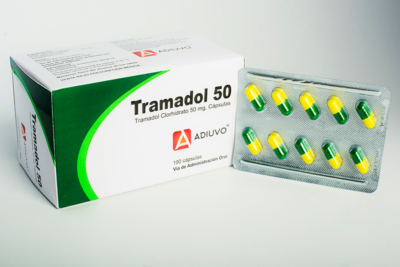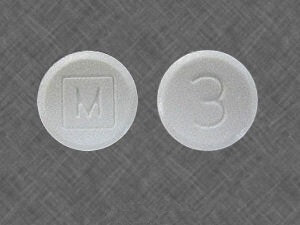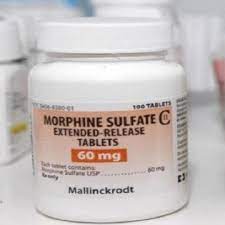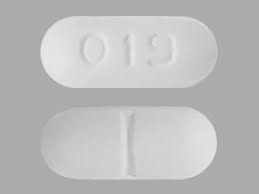Tramadol 50mg is a prescription-strength analgesic used for the management of moderate to moderately severe pain in adults. As a centrally acting synthetic opioid, Tramadol works by altering the way the brain and nervous system respond to pain. It provides effective relief for conditions such as post-operative discomfort, chronic musculoskeletal pain, and injury-related pain.
Tramadol 50mg: Comprehensive Guide on Benefits, Risks, and User Experiences
Tramadol 50mg is a prescription medication commonly used to manage moderate to moderately severe pain. As a synthetic opioid analgesic, it functions by altering how the brain perceives pain, providing relief for various conditions. While effective for many, it’s essential to understand its benefits, potential risks, and the experiences of those who have used it.

Tramadol 50mg: Comprehensive Guide to Uses, Benefits, Risks, and User Experiences
Overview of Tramadol 50mg
Tramadol 50mg is a prescription medication primarily used to treat moderate to moderately severe pain. As a centrally acting synthetic opioid analgesic, Tramadol works in the brain to change how the body senses and responds to pain stimuli. Available under various brand names like Ultram, Rybix ODT, and ConZip, Tramadol has become a widely used medication in pain management therapy.
This formulation is commonly prescribed in 50-milligram tablets, which are typically taken by mouth every 4 to 6 hours as needed. Tramadol belongs to a class of drugs known as opioid agonists, although it has a dual mechanism of action, functioning both as a weak mu-opioid receptor agonist and as a reuptake inhibitor of serotonin and norepinephrine. This unique profile sets it apart from traditional opioids and contributes to its effectiveness for certain types of pain.
Pharmacological Profile and Mechanism of Action
Tramadol exerts its analgesic effects through two primary pathways:
-
Opioid Receptor Agonism: Tramadol binds to the mu-opioid receptors in the brain and spinal cord, mimicking the effects of endorphins to reduce the perception of pain.
-
Monoamine Reuptake Inhibition: The medication also inhibits the reuptake of neurotransmitters serotonin and norepinephrine, which helps modulate the pain pathway and contributes to mood stabilization.
Because of this dual-action mechanism, Tramadol 50mg is not only effective for nociceptive pain (pain from tissue damage) but also shows promise in cases involving neuropathic pain (nerve-related discomfort).
Indications and Approved Uses
Tramadol 50mg is commonly prescribed for:
-
Postoperative pain
-
Chronic musculoskeletal pain
-
Injury-related discomfort
-
Pain due to arthritis or osteoarthritis
-
Neuropathic pain syndromes
-
Back pain and sciatica
-
Dental pain following procedures
It is not recommended for as-needed relief of minor aches, and should not be considered a first-line option for mild or short-lived discomfort. Instead, it is best suited for individuals whose pain levels impact their daily functioning and quality of life.
Benefits of Tramadol 50mg
When used as directed under medical supervision, Tramadol 50mg offers a range of therapeutic advantages:
1. Effective Pain Relief
Tramadol delivers reliable relief for moderate to moderately severe pain, making it especially beneficial for patients recovering from surgery or managing chronic pain conditions.
2. Lower Abuse Potential (Compared to Traditional Opioids)
Because of its atypical opioid structure and dual mechanism, Tramadol was initially thought to have a lower potential for dependence. While caution is still necessary, it is generally considered safer than medications like morphine or oxycodone when used responsibly.
3. Mood Elevation
Due to its serotonin and norepinephrine reuptake inhibition, Tramadol may have mild antidepressant-like effects, which can be beneficial for patients with comorbid pain and mood disorders.
4. Versatile Formulations
Tramadol is available in multiple formats, including:
-
Immediate-release tablets (50mg)
-
Extended-release capsules and tablets
-
Oral drops and disintegrating tablets This makes it easier to tailor the regimen to individual needs.
5. Reduced Gastrointestinal Distress
Compared to NSAIDs like ibuprofen or naproxen, Tramadol does not irritate the stomach lining or increase the risk of ulcers and bleeding, making it suitable for patients with gastrointestinal sensitivities.
Risks and Side Effects
Despite its benefits, Tramadol is not without risks. As with any prescription painkiller, especially one with opioid activity, caution is advised.
Common Side Effects
-
Nausea or vomiting
-
Dizziness or lightheadedness
-
Constipation
-
Headache
-
Drowsiness or fatigue
-
Dry mouth
-
Sweating
Serious Side Effects
-
Seizures: Tramadol can lower the seizure threshold, particularly in individuals with a history of epilepsy or those using other seizure-inducing drugs.
-
Serotonin Syndrome: When combined with SSRIs, MAOIs, or other serotonergic drugs, Tramadol may cause a potentially life-threatening condition.
-
Respiratory Depression: Though less likely than with stronger opioids, this remains a concern, especially in high doses or when combined with other CNS depressants.
-
Addiction and Dependence: Prolonged use can lead to physical dependence and withdrawal symptoms upon discontinuation.
-
Liver or Kidney Damage: Long-term or high-dose use can strain the liver and kidneys, especially in patients with pre-existing conditions.
Overdose Risks
Symptoms of overdose include slowed breathing, extreme drowsiness, pinpoint pupils, unconsciousness, and potentially death. Immediate medical attention is required if an overdose is suspected.
Drug Interactions
Tramadol can interact with a variety of medications, leading to either increased risk of side effects or reduced effectiveness.
Major Interactions to Avoid
-
MAO Inhibitors: Such as phenelzine or tranylcypromine. These can dramatically increase the risk of serotonin syndrome.
-
SSRIs and SNRIs: Fluoxetine, sertraline, and venlafaxine can elevate serotonin levels, compounding the risk.
-
Benzodiazepines: Like diazepam or lorazepam, may enhance sedative effects and suppress breathing.
-
Alcohol: Significantly increases the risk of respiratory depression and CNS suppression.
-
Anticonvulsants: May lower seizure threshold further when combined with Tramadol.
It is essential to consult a healthcare provider and provide a full list of current medications, including over-the-counter drugs and supplements, before beginning treatment.
Contraindications and Precautions
Certain populations should avoid Tramadol or use it only under close supervision:
-
Children under 12: Not recommended due to unpredictable metabolism.
-
Pregnant and breastfeeding women: Tramadol can cross the placenta and is present in breast milk.
-
Patients with a history of substance abuse: Higher risk of misuse or addiction.
-
People with respiratory disorders: Such as COPD or sleep apnea.
Physicians may order dose adjustments or monitoring for older adults or individuals with liver or kidney impairment.
Dosage and Administration
The standard starting dose of Tramadol is 50mg taken every 4–6 hours as needed, with a maximum daily limit of 400mg. For older adults or those with impaired liver/kidney function, a reduced maximum of 300mg per day is often recommended.
Important Guidelines
-
Do not crush or chew the tablets.
-
Take with or without food, depending on personal tolerance.
-
Avoid alcohol and other sedatives during treatment.
-
Never double dose to make up for a missed one.
For long-term pain control, healthcare providers may switch patients to extended-release formulations, allowing for smoother plasma levels and reduced pill burden.
User Experiences and Testimonials
Positive Reviews
“After my knee surgery, Tramadol 50mg was a lifesaver. It managed my pain without knocking me out like other opioids.” – Alex M., age 42
“I suffer from fibromyalgia, and this is the only thing that dulls the burning pain in my legs. The fact that it helps with my depression is a bonus.” – Jenna R., age 35
“My doctor was cautious due to my age, but the 50mg tablets twice a day have been perfect. I can now walk and garden again without terrible back pain.” – Edward P., age 70
Mixed Experiences
“It worked well for pain, but the nausea was intense the first few days. It wore off eventually, but it wasn’t fun at first.” – Mark S.
“Tramadol helped, but I noticed I was becoming reliant on it after just a few weeks. Had to taper off under supervision.” – Dina K.
Negative Reviews
“It gave me terrible headaches and dizziness. I couldn’t concentrate at work. Switched to a non-opioid alternative.” – Raymond C.
“Made me incredibly drowsy. Felt out of it all day, even on the lowest dose. Not worth it for me.” – Tasha W.
Alternative Options
If Tramadol 50mg isn’t a fit, patients may consider other treatments based on the type and intensity of their pain:
-
Non-Opioid Analgesics: Acetaminophen or NSAIDs
-
Stronger Opioids: Oxycodone, hydrocodone (for severe pain, under strict regulation)
-
Antidepressants: Duloxetine or amitriptyline for neuropathic pain
-
Anticonvulsants: Gabapentin or pregabalin
-
Topical Agents: Lidocaine patches, capsaicin cream
-
Physical Therapy and Cognitive Behavioral Therapy as non-pharmacologic options
Storage and Disposal
Store Tramadol 50mg at room temperature, away from light and moisture. Keep it out of reach of children and pets. Unused or expired medication should be properly disposed of through a drug take-back program or by following FDA disposal guidelines.
Legal and Regulatory Status
Tramadol is classified as a Schedule IV controlled substance in the United States, indicating a lower risk of abuse compared to Schedule II opioids, but still subject to regulation. Always obtain Tramadol through a licensed healthcare provider and fill prescriptions at accredited pharmacies.
Final Thoughts
Tramadol 50mg remains a valuable tool in the arsenal against pain when used appropriately. Its unique pharmacological profile—blending opioid activity with monoamine reuptake inhibition—makes it a versatile choice for many patients. However, it is essential to weigh the benefits against the potential for side effects, dependency, and drug interactions.
Patients considering Tramadol should maintain open communication with their healthcare provider and follow prescribed instructions precisely to minimize risks and maximize relief.
Frequently Asked Questions (FAQs) about Tramadol 50mg
1. What is Tramadol 50mg used for?
Tramadol 50mg is commonly prescribed to relieve moderate to moderately severe pain. It is often used after surgery, injury, or for chronic pain conditions like arthritis or back pain.
2. How does tramdol 50mg work?
Tramdol 50mg (a common misspelling of Tramadol) works by binding to opioid receptors in the brain, altering how your body perceives pain. It also affects neurotransmitters like serotonin and norepinephrine, which further help reduce pain sensations.
3. Is tramdola 50mg the same as Tramadol 50mg?
Yes, “tramdola 50mg” appears to be a common misspelling or brand variant of Tramadol 50mg. They generally refer to the same medication unless otherwise specified. Always verify the exact formulation and branding with a pharmacist or healthcare provider.
4. How long does it take for tramdola 50mg to start working?
Tramdola 50mg typically begins to relieve pain within 30 to 60 minutes of ingestion. Peak effects may be felt within 2 hours.
5. How often can I take tramdola 50mg?
Generally, tramdola 50mg can be taken every 4 to 6 hours as needed for pain. However, the total daily dosage should not exceed your doctor’s recommendation—usually not more than 400mg per day in adults.
6. Can I become addicted to tramdol 50mg?
Yes. Like other opioids, tramdol 50mg carries a risk of dependence and addiction, especially when used for long periods or at high doses. Always follow your doctor’s instructions carefully.
7. What are the common side effects of tramdola 50mg?
Common side effects of tramdola 50mg include:
-
Nausea
-
Dizziness
-
Constipation
-
Drowsiness
-
Headache
If side effects persist or worsen, consult your healthcare provider immediately.
8. Can I drive after taking tramdola 50mg?
No. Tramdola 50mg may cause drowsiness, dizziness, or impaired thinking. It’s advised not to drive or operate heavy machinery until you know how the medication affects you.
9. Can tramdola 50mg be taken with other medications?
Tramdola 50mg can interact with many medications, including antidepressants, muscle relaxants, sedatives, and other opioids. Always inform your doctor about all medications and supplements you’re taking.
10. Is it safe to drink alcohol while taking tramdola 50mg?
No. Combining tramdola 50mg with alcohol can significantly increase the risk of dangerous side effects, including respiratory depression, drowsiness, and even coma.
11. Can I take tramdol 50mg if I’m pregnant or breastfeeding?
It’s generally not recommended to use tramdol 50mg during pregnancy or while breastfeeding due to potential risks to the baby. Consult your healthcare provider for safer alternatives.
12. What should I do if I miss a dose of tramdola 50mg?
If you miss a dose of tramdola 50mg, take it as soon as you remember. If it’s almost time for your next dose, skip the missed one—do not double up to make up for a missed dose.
13. What happens if I overdose on tramdola 50mg?
An overdose of tramdola 50mg can be life-threatening. Symptoms may include slowed breathing, extreme drowsiness, unconsciousness, or seizures. Seek emergency medical help immediately if you suspect an overdose.
14. How should tramdola 50mg be stored?
Store tramdola 50mg at room temperature, away from moisture, heat, and light. Keep it out of reach of children and pets, and do not share your medication with others.
15. Is there a difference between tramdola 50mg tablets and extended-release versions?
Yes. Regular tramdola 50mg tablets are short-acting and used for immediate pain relief. Extended-release versions are designed for chronic pain and should not be split, crushed, or chewed.

















Reviews
There are no reviews yet.